What's New
Displaying results 291 - 300 of 4052
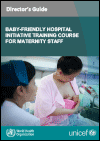
Resource | Guidelines,
All health workers who care for women and children during the postnatal period and beyond have a key role to play in establishing and sustaining breastfeeding. Many health workers cannot fulfil this role effectively because they have not been trained to do so. This updated training course is built upon the revised 2018 Ten Steps to Successful Breastfeeding, the latest version of the guidance for implementing the Baby-friendly Hospital Initiative (BFHI) in facilities providing maternity and newborn services. The materials in this training course complement existing courses and can be used as part of the pre-service education of health workers.
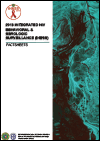
Resource | Fact Sheets,
The 2018 Integrated Behavioral and Serologic Surveillance (IHBSS) Fact Sheets for Males who have Sex with Males & Transgender Women (MSM & TGW) and Female Sex Workers (FSW). With the alarming rise in the HIV cases in the Philippines, it is crucial that we get an in-depth understanding of the behavior and serologic aspects of our key populations who are at most risk for HIV infection.

Resource | Fact Sheets,
From October to December 2019, there were 3,029 newly confirmed HIV-positive individuals reported to the HIV/AIDS & ART Registry of the Philippines (HARP). Sixteen percent (474) had clinical manifestations of advanced HIV infection at the time of testing.
Ninety-five percent (2,880) of the newly diagnosed were male. The median age was 28 years old (age range: 1-71 years old). Almost half of the cases (49%, 1,475) were 25-34 years old and 31% (926) were 15-24 years old at the time of diagnosis.
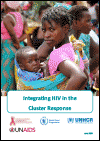
Resource | Publications,
WFP has led the development and finalization of a key document for integrating HIV within the Cluster Response, along with UNHCR and UNAIDS support. The guidance key consideration that affect the HIV response in humanitarian settings, as well as provides key actions that are required for a minimum initial response. Covering health, protection, nutrition, and food security, the guidance document is a comprehensive tool for those working in humanitarian response and fragile contexts.
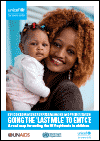
Resource | Publications,
The ‘Last Mile’ road map draws on the latest scientific research and programmatic evidence to describe and recommend strategies to achieve the elimination of mother-to-child transmission of HIV (EMTCT). It includes a synthesis of evidence and country experiences for reaching EMTCT and recommends clear strategies that can improve the coverage, effectiveness and quality of national programmes for the prevention of mother-to-child transmission (PMTCT). The goal of this document is to provide guidelines for coordinated action so that national programmes address local priority areas to achieve EMTCT in an effective, people-centred, efficient and directed manner.

Resource | Infographics,
The 2020 Asia-Pacific regional violence against women snapshot is the fifth annual edition of this publication. It shows the prevalence and trends of violence against women in countries throughout the Asia-Pacific region.
The data in the map and Table 2 reflect the most recent (national, if available) data collected with either the methodology of the World Health Organization Multi-country Study on Women's Health and Domestic Violence or the Domestic Violence module of the Demographic and Health Survey, from publicly available survey reports between 2000-2020, updated in July 2020.
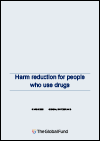
Resource | Publications,
This technical brief describes how interventions for people who use drugs are to be incorporated into funding requests to the Global Fund. The Global Fund is the major source of international funding in low-and middle-income countries for harm reduction, and it supports evidence-based interventions aimed at ensuring access to HIV prevention, treatment, care, and support for all key populations, including people who use drugs.
According to Global Fund policy, lower-middle and upper-middle income countries applying for funding must focus 100% of budget on key populations and 50% of budget on underserved populations, as well as on the highest-impact interventions. Low-income countries are also strongly encouraged to target resources to those at highest risk.
It is therefore strongly recommended that all countries with evidence of HIV transmission among people who use drugs include in their proposals harm reduction programs for people who use drugs, both in the general community and in prison and other closed settings.
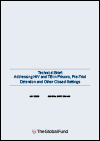
Resource | Publications,
This technical brief describes how HIV and TB interventions for people in prison and other closed settings can be incorporated into funding requests to the Global Fund. The Global Fund supports evidence-and rights-based interventions aimed at ensuring access to HIV and TB prevention, treatment, care, and support for key populations, including people in prison.
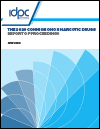
Resource | Publications,
The 63rd session of the Commission on Narcotic Drugs (CND or Commission) took place in Vienna between 4 and 6 March 2020. Incredible as it now seems, held during the early phases of the current global health pandemic, only the precautionary absence of a few full delegations and warnings regarding healthcare counter measures made it feel any different from previous ‘normal’ sessions. Indeed, since this year’s meeting followed on from the Commission’s 2019 Ministerial Segment and multilateral agreement on the associated Ministerial Declaration expectations were relatively low. Indicative of this was the tabling of only five resolutions, around half the number seen in previous years. Nonetheless, as has been increasingly the case the twin issues of complexity and tension were identifiable throughout the week. Put simply, with intricacy, fluidity and dynamism continuing to characterize illicit drug markets has come growing variations in national policy approaches designed to deal with them and attendant inter-state and state-UN system tensions at the international level.
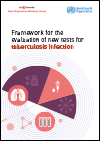
Resource | Publications,
This framework for evaluation of new immunodiagnostic tests for the detection of TB infection aims to promote and direct research by identifying standard study designs and evaluation protocols. As such it should facilitate their standardized evaluation and accelerate adoption into global and national policy and subsequent scale-up.
The focus of this framework is on evaluation of diagnostic performance of tests for TB infection and provides guidance on study design, populations, reference standards, sample size calculation and data analysis. Additionally, it covers technical issues that should be considered when evaluating new tests for TB infection, evaluation of safety for skin tests, costs to the health system patients, preferred features and operational characteristics.
The document is intended for test manufacturers, researchers, research funders, regulators, TB programme coordinators, civil society and other stakeholders.





